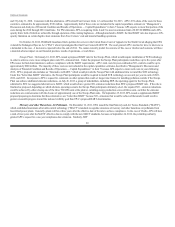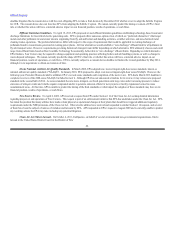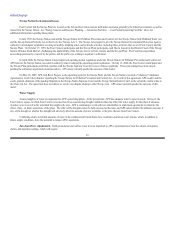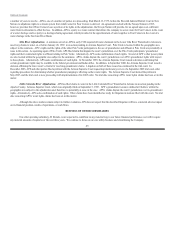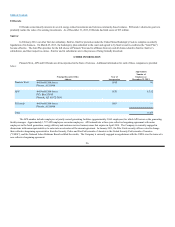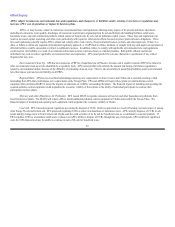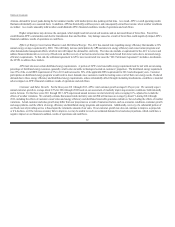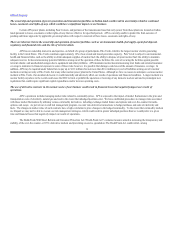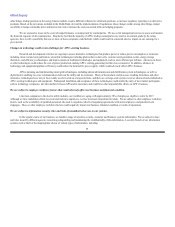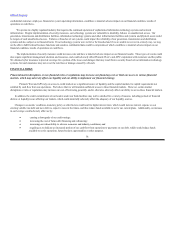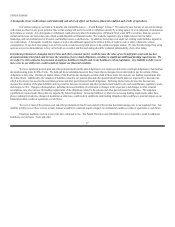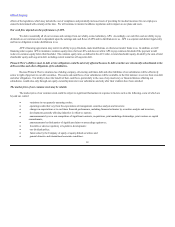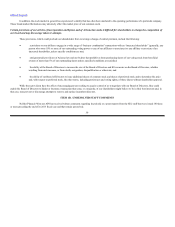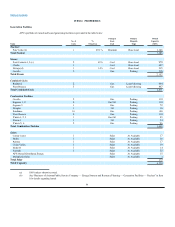APS 2013 Annual Report Download - page 33
Download and view the complete annual report
Please find page 33 of the 2013 APS annual report below. You can navigate through the pages in the report by either clicking on the pages listed below, or by using the keyword search tool below to find specific information within the annual report.
Table of Contents
Effluent Limitation Guidelines. EPA is expected to finalize revised effluent limitation guidelines establishing technology-based wastewater discharge
limitations for fossil-fired electric generating units in 2014. EPA has indicated that it expects the revised standards to target metals and other pollutants in
wastewater streams originating from fly ash and bottom ash handling activities and scrubber-related operations. APS currently disposes of fly ash waste and
bottom ash in ash ponds at Four Corners. Changes required by the rule could significantly increase ash disposal costs at Four Corners.
New Source Review. EPA has taken the position that many projects electric utilities have performed are major modifications that trigger New Source
Review requirements under the Clean Air Act. The utilities generally have taken the position that these projects are routine maintenance, repair and replacement
and did not result in emissions increases, and thus are not subject to New Source Review. In 2009, APS received and responded to a request from EPA
regarding projects and operations at Four Corners. Several environmental non-governmental organizations filed suit against the Four Corners participants for
alleged violations of New Source Review and the NSPS programs of the Clean Air Act. If EPA seeks to impose New Source Review requirements at Four
Corners or any other APS plant, or if the citizens groups prevail in their Clean Air Act lawsuit, capital investments could be required to install new pollution
control technologies. EPA could also seek civil penalties.
APS cannot assure that existing environmental regulations will not be revised or that new regulations seeking to protect the environment will not be
adopted or become applicable to it. Revised or additional regulations that result in increased compliance costs or additional operating restrictions, particularly
if those costs incurred by APS are not fully recoverable from APS’s customers, could have a material adverse effect on its financial condition, results of
operations or cash flows. Due to current or potential future regulations or legislation, the economics of continuing to own certain resources, particularly coal
facilities, may deteriorate, warranting early retirement of those plants, which may result in asset impairments. APS would seek recovery in rates for the book
value of any remaining investments in the plants as well as other costs related to early retirement, but cannot predict whether it would obtain such recovery.
APS faces physical and operational risks related to climate change, and potential financial risks resulting from climate change litigation and
legislative and regulatory efforts to limit GHG emissions.
Concern over climate change, deemed by many to be induced by rising levels of GHG in the atmosphere, has led to significant legislative and
regulatory efforts to limit CO , which is a major byproduct of the combustion of fossil fuel, and other GHG emissions.
Financial Risks — Potential Greenhouse Gas Regulation . EPA is taking action to regulate domestic GHG emissions and is expected to issue
proposed regulations in mid-2014. Any limitations on CO and other GHG emissions resulting from this regulatory effort could require substantial additional
capital expenditures and operating costs and could have a material adverse impact on all fossil-fuel-fired generation facilities (particularly coal-fired facilities,
which constitute approximately 30% of APS’s owned and leased generation capacity).
At the state level, the California legislature enacted legislation to address GHG emissions and the California Air Resources Board approved
regulations that established a cap-and-trade program for
30
2
2


